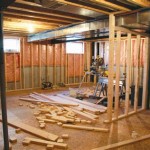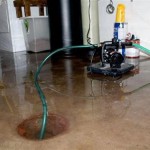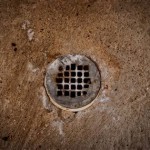How to Put a Bathroom in a Basement Without Plumbing
Adding a bathroom to a basement can significantly enhance the functionality and value of your home. However, the prospect of tackling the plumbing can be daunting, especially if your basement lacks existing plumbing lines. Fortunately, there are innovative solutions that allow you to create a comfortable and convenient bathroom without the traditional hassle of extensive plumbing work. This article will explore some of the most effective methods for installing a basement bathroom without existing plumbing, providing a clear and practical guide to navigating this project.
Understanding the Challenges
Before delving into the solutions, it is crucial to understand the specific challenges associated with adding a bathroom to an unplumbed basement. Firstly, the lack of existing plumbing necessitates the installation of new water supply lines and waste drainage systems. This requires significant excavation and potential modifications to your home's foundation or exterior. Secondly, basement spaces often present unique challenges in terms of moisture control, ventilation, and potential flooding risks. These factors must be carefully considered during the planning and construction phases to ensure the bathroom is safe and durable.
Innovative Solutions for Basement Bathroom Plumbing
While traditional plumbing methods involve extensive excavation and pipework, several innovative solutions have emerged to simplify the process of adding a basement bathroom without existing plumbing. These solutions address both water supply and waste drainage, offering a range of cost-effective and efficient options:
1. Tankless Water Heaters
Tankless water heaters, also known as on-demand water heaters, eliminate the need for a bulky storage tank. They heat water instantly as it is needed, saving space and energy. For a basement bathroom, a tankless unit can be strategically located near the fixtures, reducing the length of hot water supply lines. This minimizes the need for extensive plumbing work and offers a highly efficient solution.
2. Gray Water Systems
Gray water systems utilize water from sinks, showers, and washing machines, which is treated and filtered to create a non-potable water source for flushing toilets. This method significantly reduces the amount of fresh water needed for bathroom fixtures, reducing both water consumption and plumbing requirements. Gray water systems typically require a separate drainage line, but they can be installed with minimal disruption to existing foundation or plumbing.
3. Pump Systems
Pump systems are essential for transporting waste water upwards to existing drain lines. These systems use a small pump to move the water through a dedicated pipe, allowing you to utilize the existing drainage system for your new basement bathroom. Pumps come in various sizes and configurations, and professional installation is recommended to ensure proper functionality and prevent any future issues.
4. Portable Toilets
Portable toilets offer a temporary or long-term solution for those seeking a minimally invasive bathroom installation. These toilets operate independently of traditional plumbing systems, utilizing a waste tank or a composting system for sanitation. While portable toilets do not require extensive plumbing, they may need regular maintenance for optimal hygiene and functionality.
Planning Your Basement Bathroom
Once you have chosen your preferred plumbing solutions, careful planning is essential for a successful installation. This involves several key steps:
1. Design and Layout
Determine the size and layout of your new bathroom, taking into account existing structural features and desired amenities. Create a detailed blueprint or floor plan to guide the installation process. This plan should include the location of fixtures, the placement of plumbing lines, and the placement of any venting or drainage systems.
2. Building Permits and Regulations
Contact your local building department to obtain the necessary permits and ensure compliance with local building codes. These regulations may vary depending on your location, so it's crucial to familiarize yourself with the specific requirements. Obtaining the necessary permits will help ensure a safe and compliant installation.
3. Hiring Professionals
While some aspects of the installation may be DIY-friendly, it's essential to engage professional plumbers and electricians for certain tasks. Professional installation ensures proper plumbing and electrical connections, preventing future leaks, malfunctions, and potential safety hazards.

How To Diy Bathroom In Basement Without Breaking Concrete

How To Diy Bathroom In Basement Without Breaking Concrete

How To Diy Bathroom In Basement Without Breaking Concrete

How To Add A Bathroom In Basement Without Breaking Concrete

No Rough In Problem Our Diy Bathroom Basement From A Closest Cheap And Beautiful This Life

How To Put A Bathroom In Basement Without Plumbing 2024

How To Diy Bathroom In Basement Without Breaking Concrete

A Basement Bathroom Renovation Merrypad

How To Install A Shower In The Basement Without Breaking Concrete Upgradedhome Com

How To Install A New Bathroom On Concrete Slab Or In Basement







